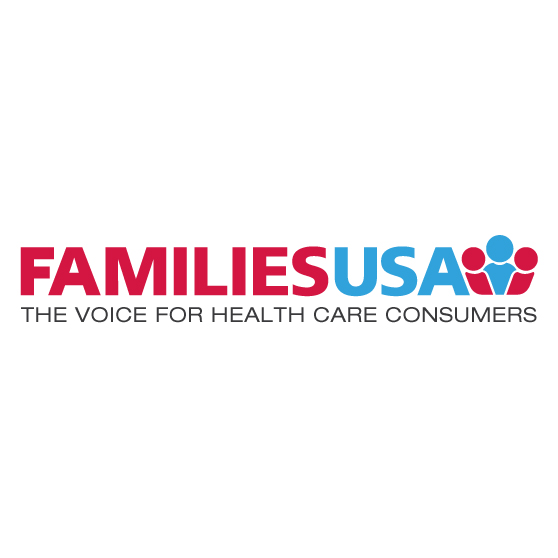
Addressing Rural Seniors’ Unmet Needs for Oral Health Care
05.06.2019
Cheryl Fish-Parcham (Families USA), Melissa Burroughs (Families USA), Eric P. Tranby (Dentaquest Partnerhsip for Oral Health Advancement), Avery R. Brow (Dentaquest Partnership for Oral Health Advancement), Addressing Rural Seniors’ Unmet Needs For Oral Health Care, Health Affairs Blog, 5/6/2019, https://www.healthaffairs.org/do/10.1377/hblog20190501.797365/full/.
Copyright ©2015 Health Affairs by Project HOPE – The People-to-People Health Foundation, Inc.
Residents in rural America face major difficulties in access, coverage, and geography that limit their ability to obtain good oral health care. This is especially true for the rural elderly; whose oral health is often worse than that of the rest of the nation. While seniors nationwide would benefit from coverage improvements and better access to timely and appropriate care to reduce tooth decay, tooth loss, and oral disease, these barriers take an especially serious toll on rural seniors. Poor oral health places a disproportionate burden on rural seniors, but there are potential policy solutions and pending legislation to address these challenges.
The link between oral health and overall health cannot be understated — particularly for the elderly — and numerous policy changes are needed to ensure that health coverage and care address oral health within the context of strong management of overall health. For seniors in rural communities and across the nation, pending legislation could begin to address these issues through expanded grant programs and, critically, by adding dental coverage to Medicare. Improved access could result if Congress appropriates sufficient funding for the Action for Dental Health Act, which passed in December 2018 as well as for existing grant programs that support community health centers and training of the oral health workforce. Other already-introduced bills would add an oral health benefit to Medicare, and these efforts could go a long way toward alleviating coverage disparities for seniors and adults under age 65 who have disabilities.
Rural Seniors Disproportionately Experience Barriers That Prevent Them From Getting Needed Oral Health Care
Nearly one-quarter of residents of rural areas are at least 65 years old. They face major barriers including the cost of dental care, lack of coverage, and limited access to providers. An analysis of 2016 Behavioral Risk Factor Surveillance System data found that 20 percent of rural seniors have not seen a dentist or visited a dental clinic for more than five years, compared to 14 percent of non-rural seniors. This disparity in access to care has been evident for at least ten years: from 2006 to 2016 rural seniors were 33 percent to 40 percent more likely than non-rural seniors to have had no dental care. Regardless of geography, seniors are becoming less likely to have all of their teeth pulled due to decay or gum disease over time. However, in 2016, one in five (20 percent) rural seniors reported having all their teeth pulled by the time of the survey was completed, compared to one in seven (14 percent) non-rural seniors. Nearly 23 percent of rural seniors have had six or more teeth, but not all, of their teeth pulled.
Poor Oral Health Exacerbates Other Health Problems Common In Rural Areas
Unmet oral health needs can exacerbate other health problems that are common in rural areas. Studies show strong links between oral health and diabetes, a disease with much higher rates of death in rural areas than in more urban locations. Oral health treatment, including scaling and cleaning, can ward off oral health problems that often are associated with diabetes. Rural seniors also have high rates of obesity and heart disease, conditions that are linked to gum infection. Poor oral health, including pain, bleeding, and lack of dentition, makes eating difficult. As a result, many people favor foods that are easy to chew and swallow but often lack nutritional value and are high in cholesterol and fat, worsening all associated conditions. In surveys, self-rated poor oral health is linked to low levels of self-rated general health, self-esteem, and life satisfaction among seniors.
It Can Be Particularly Difficult To Find Dental Providers In Rural Areas
About 66 percent of the nation’s Dental Health Professional Shortage Areas are in rural or partially rural communities. The National Advisory Committee on Rural Health lists a plethora of reforms that are necessary to make significant differences in access to oral health care in rural areas. Major challenges include raising capital, attracting dentists to rural areas, and the large number of dentists expected to retire in the near future. Addressing provider shortages will require measures including expanded coverage to ensure reimbursement; enhanced recruitment and retention; investment in rural health centers that provide care; and workforce solutions, including involving the full range of dental practitioners.
Medicaid Dental Benefits Can Address Some Barriers, But Seniors Need Additional Coverage Solutions
States can improve the situation for rural adults, including seniors, by providing adult dental care within Medicaid coverage, an option available to all states. However, whether states provide that coverage to adults at all, and whether that coverage is comprehensive or limited to emergency extractions and pain relief, varies considerably.
For example, in West Virginia, Medicaid’s adult oral health benefit covers only emergency services: extracting up to two problematic teeth per year, draining abscesses, performing biopsies, and removing oral tumors. West Virginia Medicaid does not cover dental exams for adults, so those who need oral health clearance before undergoing heart surgery or beginning chemotherapy may join a waiting list at the one dental school in the state that provides that service. Limiting coverage in this way makes it difficult for people to get the care they need — when they need it.
Medicaid coverage of adult oral health care fluctuates over time in different states and is tied to state budget decisions. Cutbacks and coverage fluctuations pose additional challenges and barriers to care. Proposals to block grant Medicaid or to impose per capita caps or work requirements would likely cause more states to cut adult oral health coverage. In California, Medicaid provided no adult dental coverage from 2009 to 2014. The state has gradually restored coverage and, as of 2018, provides a fairly comprehensive benefit. However, the nine-year gap in coverage affected rural dental care and oral health.
A study on the elimination of optional adult dental Medicaid benefits in California documented the challenges that rural dental providers faced in addressing Medicaid cuts. Some shifted their practices to primarily serving pregnant women and children, for whom coverage was not eliminated; many others mainly performed extractions as a way to mitigate adults’ dental pain. Even with the staggered restoration of adult dental coverage after 2014, it is clear that seniors needed additional care — such as periodontal services, root canals, and dentures — that was not restored to Medicaid until 2018. For rural seniors, the consequences of these gaps in coverage, as well as other barriers to coverage and care, can be seen in California Behavioral Risk Factor Surveillance System data from 2016. These data reveal that, as of 2016, 15 percent of seniors residing in rural California zip code areas had all of their teeth pulled due to decay or gum disease, compared to 8 percent of non-rural seniors. Moreover, oral health screening data revealed that in 2016, older adults in rural California counties who had lost all their teeth were half as likely to have dentures compared to their urban counterparts. The proportion of California rural seniors with no teeth grew larger from 2008 to 2016, reflecting a lack of care during the period when California Medicaid was not covering adult dental services. [Author analysis of 2008-2016 BRFSS data for California using the identical methodology as in this fact sheet.] Even with full Medicaid coverage restored, rural residents may have to travel long distances to receive extensive care, such as root canals, that are not offered by a local clinic.
Funding The Action For Dental Health Act Will Help Bring Clinics And Dental Professionals To Underserved Rural Areas
The Action for Dental Health Act authorized grant programs that could provide more care in underserved communities. It is still up to Congress to appropriate funds to make these grants viable. When funded, the act could provide grants and contracts to state, county, tribal, and local officials or stakeholders to reduce geographic and cultural barriers to dental services in such shortage areas and to establish dental homes for both adults and children. The act includes new initiatives to improve prevention and increase public awareness about oral health; it also provides new and continuing grants for innovative programs in underserved communities. For the first time, those programs could include an explicit focus on establishing dental homes for the elderly and individuals with disabilities, including those living in long-term care facilities. While these types of grant programs have the potential to foster incremental change, a sustainable oral health care system for rural seniors will require additional policy changes.
Medicare Coverage Of Oral Health Could Make Care Truly Available And Affordable
As explained in a recent white paper by leaders in the health and oral health fields, adding an oral health benefit to Medicare Part B would have a number of advantages as the best policy vehicle to help seniors afford and obtain oral health coverage and care. The white paper explains that Medicare could offer affordable comprehensive oral health coverage to everyone who relies on the program for health coverage. The white paper also shows the base premium increase for a Part B oral health benefit at about $14.50 per month. This model is broadly affordable because of Medicare mechanisms that make its services available and affordable to the Medicaid population (typically, seniors with incomes below about 73 percent of the federal poverty line, or about $9,200 annually) and those just above the poverty line through the Qualified Medicare Beneficiary (QMB) program. Full Medicaid and QMB beneficiaries, with low assets and incomes up to about $12,700 for an individual in 2019, would not be charged deductibles, co-insurance, or premiums for dental care. Medicare beneficiaries with low assets and incomes up to about $17,100, who do not pay Medicare Part B premiums and so would not pay a premium for dental care. Moderate- and higher-income seniors pay a deductible and 20 percent coinsurance for Medicare Part B services, with no copayment for preventive services.
Including such coverage within Medicare Part B also draws on existing systems to support fair reimbursement and provider participation. Medicare Part B has mechanisms that set and update fee schedules and adjust them by region. Physicians widely accept Medicare. Although establishing payment rates for dental professionals will take time, Medicare could enjoy wide participation among dental professionals, going a long way toward bringing providers into rural communities.
Several bills before Congress would add oral health coverage to Medicare. Rep. Roybal-Allard’s bill (H.R. 576) would remove language from the Medicare statute that currently excludes coverage for dental care, eyeglasses, hearing aids; Rep. Doggett’s bill (H.R. 1393) adds dental, vision, and hearing coverage to Medicare by removing the exclusion and details what these benefits would look like. Senator Cardin’s bill (S. 22) proposes a Medicare dental and oral health benefit that includes coverage for diagnostic, preventive, restorative, and other necessary care within Medicare Part B. Forthcoming bills are expected to also help seniors that are eligible for full Medicaid and for the Qualified Medicare Savings Program by increasing federal Medicaid matching funds for oral health services. These bills stimulate needed discussion of ways to address glaring disparities impacting oral health and, concomitantly, the overall health and well-being of seniors and people with disabilities. Adding an oral health benefit to Medicare and increasing the number of dental providers in shortage areas could make a significant difference in the health of rural seniors.



